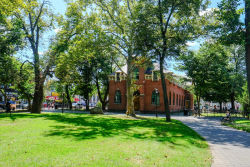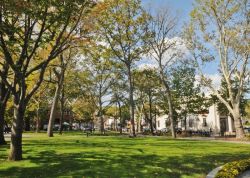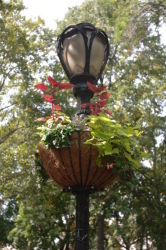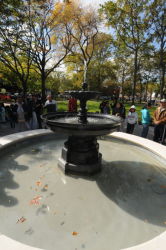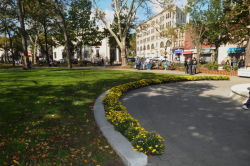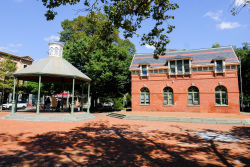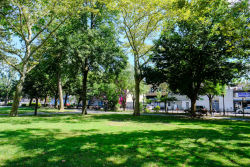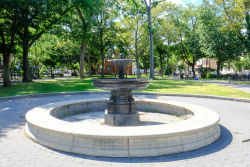Tappen Park
Tappen Park
This park is named after World War I (1914-1918) veteran James Tappen. It is among the oldest public parks on Staten Island, a former village center that predates the borough’s annexation by the City of New York.
James J. Tappen (1891-1918) served in Company D of the 308th Infantry Division of the U.S. Army during World War I. He was killed on September 29, 1918, at Binarville, France, in the Battle of Argonne. In July 1934, a bill introduced by Alderman Daniel Leonard and signed by Mayor Fiorello H. LaGuardia (1882-1947) named this park in Tappen’s honor. Before that, local residents called it Stapleton Park for the surrounding neighborhood, though it had officially been known as Washington Square since 1867.
Stapleton was founded by Mithorne Tomkins and William J. Staples in the 1830s. The two men purchased the land from the Vanderbilt family and developed it into a commercial center and tourist destination. The neighborhood was within the Village of Edgewater, part of the Town of Middletown. The neighborhood still contains some brick row houses from the 19th century, with stores on the first floor and living quarters above. Stapleton was famous for its breweries, which took advantage of the nearby spring water; the two largest brewers were Bechtel and R & H Brewery. In 1919, when the United States adopted Prohibition, R & H survived by brewing a “near beer,” which contained almost no alcohol and was therefore legal.
The Town of Middletown first purchased this property for public use in May 1867. New York City acquired it after consolidation in 1898. In 1981, Wright Street was closed off and added to the park, along with a small triangle on the opposite side of the street. This increased the park’s area by a third of an acre, bringing it to 1.777 acres.
The Edgewater Village Hall, a historic structure built in 1877, stands in Tappen Park. Following consolidation, it served as the First Municipal Court House of Staten Island and later as offices for the Board of Health and Youth, the Richmond County District Attorney’s Office, the Stapleton Child Health Clinic, and the New York State Children and Family Services Department. The building was designated a City landmark in 1968.
The western side of Tappen Park is graced by a Romanesque public restroom with wrought iron lanterns, a gazebo, benches, and ornamental brickwork. The park also contains London plane trees and sugar maples. The James J. Tappen Post Christmas Tree is lit every year, in a tradition that dates back to 1937, when a 35-foot evergreen was transplanted here from the estate of the Hoffman family. The original tree did not survive, but the name and the annual tradition live on in a blue spruce.
Another noteworthy specimen is a London plane tree planted in November 1985 to commemorate the life and work of Robert Dunne, a Parks employee. Dunne, who served the agency for 35 years, worked as a recreation director and conducted tennis clinics at the Cromwell Recreation Center. In 1984, he risked his life to save a young child who had wandered into traffic on Victory Boulevard. Robert Dunne was well known and his work was well appreciated. This tree celebrates his dedication to the people of the community.
Tappen Park was renovated in 2008, a project that included landscaping, new pathways, decorative steel perimeter fences, and an ornamental water fountain designed to evoke the Victorian period when the park was founded.
Check out your park's Vital Signs
Clean & Safe
Green & Resilient
Empowered & Engaged Users
Share your feedback or learn more about how this park is part of a
Vital Park System

